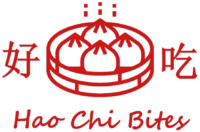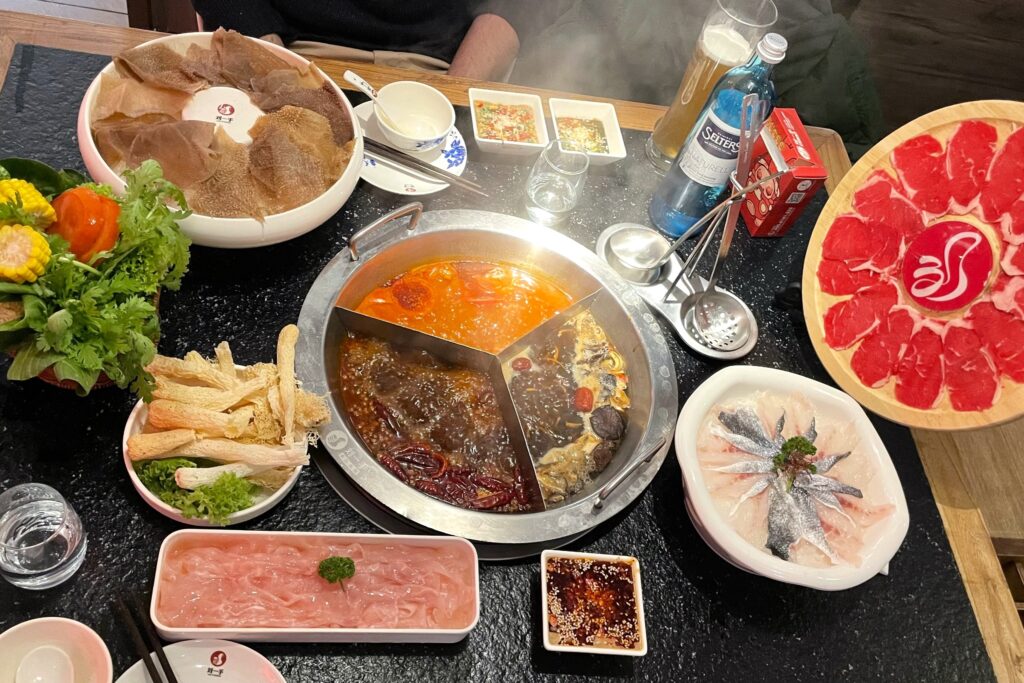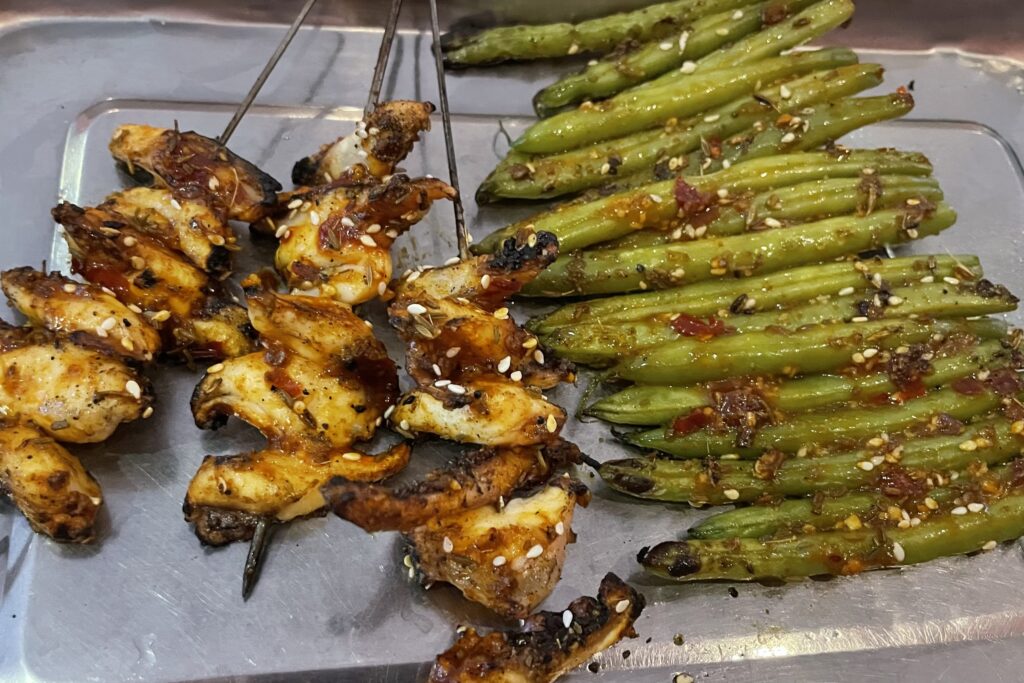Nestled in a quiet corner of Berger Street, this newly opened Tibetan restaurant is a real hidden gem. It’s run by a warm and welcoming Tibetan couple who have called Germany home for over a decade. They often chat to each other in their native Tibetan language, which somehow adds an intimate and heartwarming touch to this place.
Restaurant Profile
- Name of the Restaurant: Tibet Dawa Momo (see menu)
- Adress: Berger Str. 14, 60316 Frankfurt am Main
- Style: Tibetian Cuisine – dumplings, noodles, soups, salads etc.
- Price: around 15 – 25 EUR per Person (incl. Drinks and Tips)
The space is small yet cozy, with walls painted a warm yellow hue—a shade deeply rooted in Tibetan culture and Buddhism, symbolizing warmth, spirituality, and a connection to the sacred. Beautiful mandala artwork on the walls further enhances the ambiance. With soft, comfortable seating for two or four, it’s ideal for intimate meals or small gatherings.
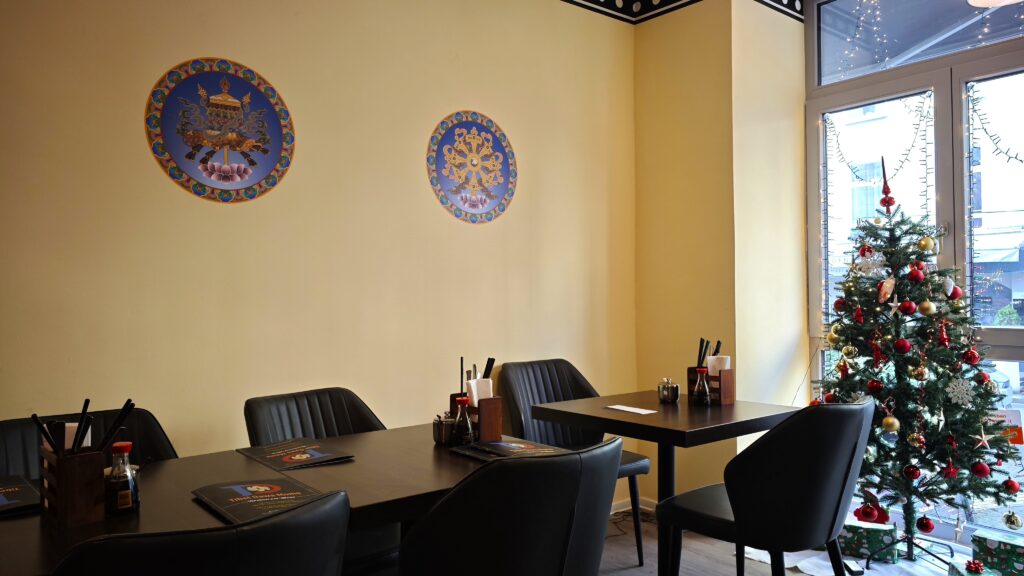
Without further ado, let’s dive into the highlights of their menu!
Our recent go-to beverages at Tibet Dawa Momo are Ginger Honey Tea and Jasmine Tea—perfect accompaniments to their comforting dishes, especially during the colder months.
The Ginger Honey Tea is a robust and invigorating brew, with a strong ginger flavor that lingers. The natural warmth of ginger combined with the sweet honey creates a soothing yet energizing effect.
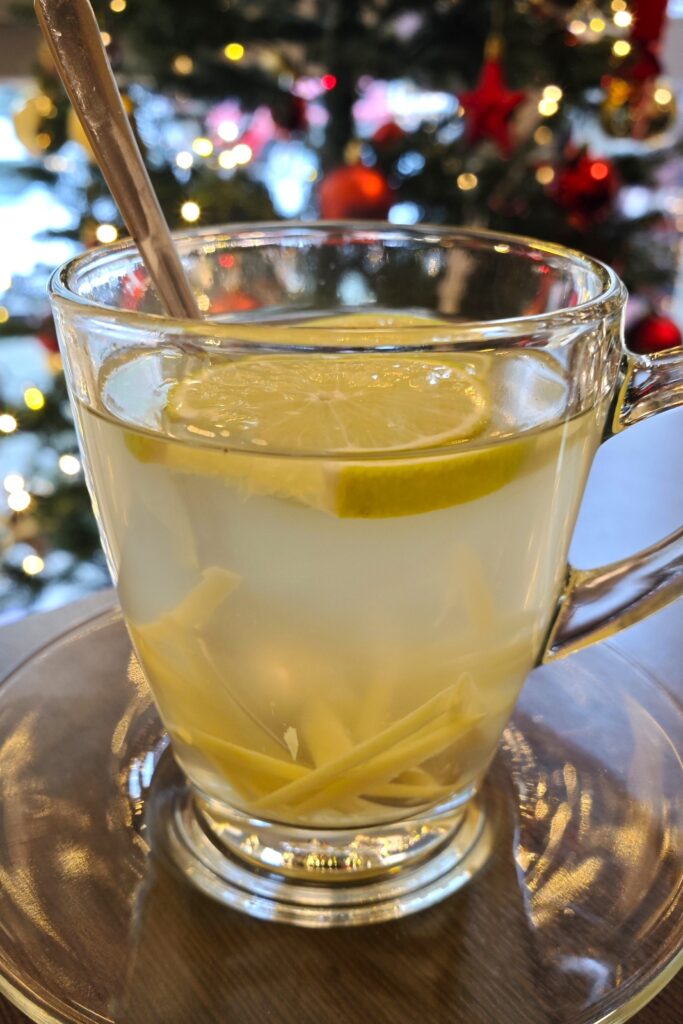
Known for its healing properties, ginger tea has been cherished for centuries in various cultures as a remedy for colds, digestion, and boosting immunity.
The Jasmine Tea, on the other hand, has a more delicate taste. At Tibet Dawa Momo, it’s brewed with real tea leaves, goji berries (枸杞) and jasmine flowers, creating a tea that’s as beautiful to look at as it is to taste. Goji berries, slightly sweet and subtly tangy, can be eaten with a spoon after steeping. Famous for their health benefits, goji berries are said to improve eye health and boost vitality. The jasmine flowers lend their signature floral aroma, while the tea itself has a hint of bitterness that is balanced by the sweetness of goji.
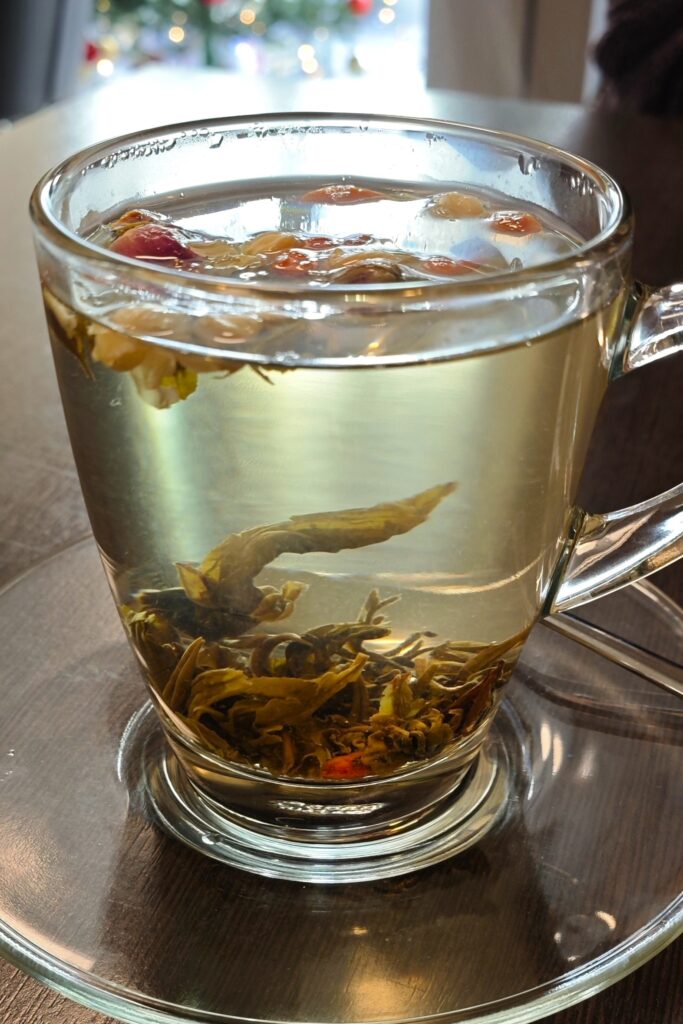
When a restaurant proudly includes “momo” in its name, as Tibet Dawa Momo does, you simply can’t miss their signature dish. “Dawa” means “moon” in Tibetan, and much like the shape of their handsome, handmade dumplings.
The Pan-Fried Momos are a crowd favorite. Each order comes with ten golden-brown dumplings, crispy on the outside, yet juicy and flavorful on the inside. The fillings are satisfyingly generous, with the standard option being a vegetable mix. Those looking for variety can opt for beef, chicken or potato – or a mixed plate with a bit of everything.
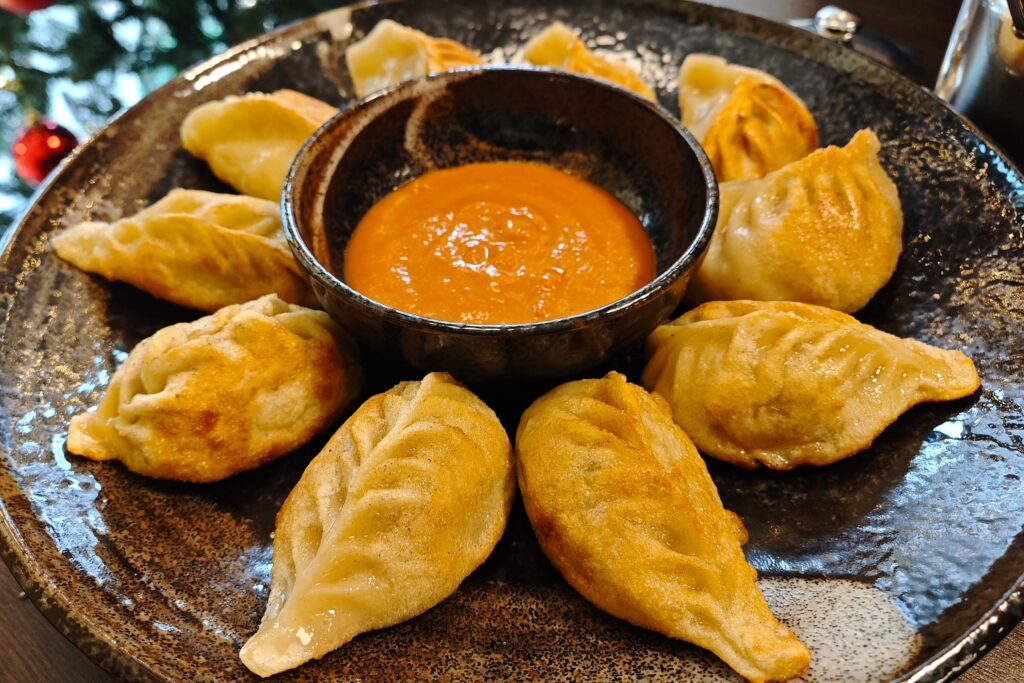
The crispy skin is thin and delicate, yet sturdy enough to hold a soup filling—a burst of flavor that surprises and pleases with every bite. Be careful, though, as they can be quite hot when bitten into! The crispy exterior contrasts with the tender, savory filling, making each bite a real joy!
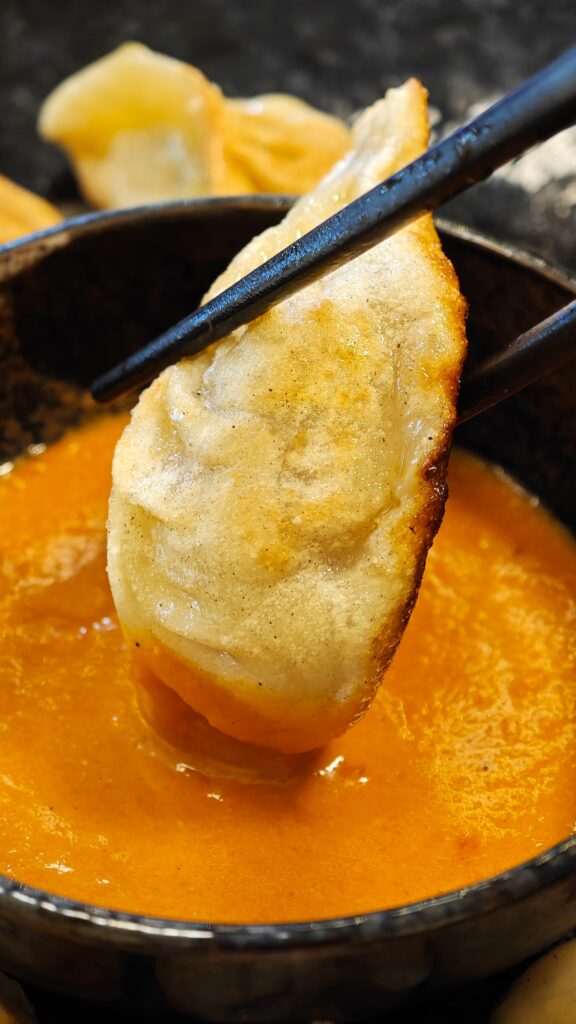
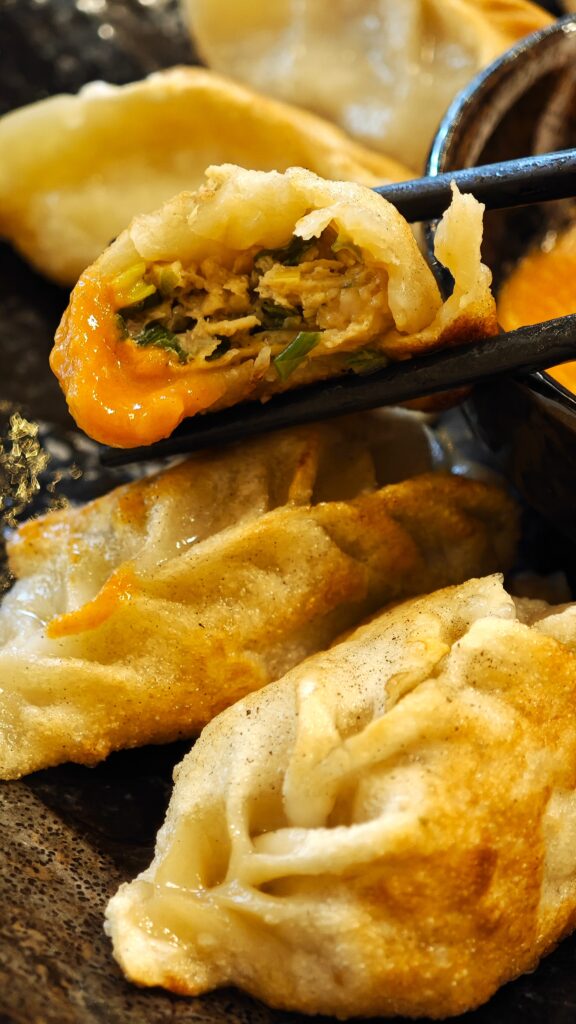
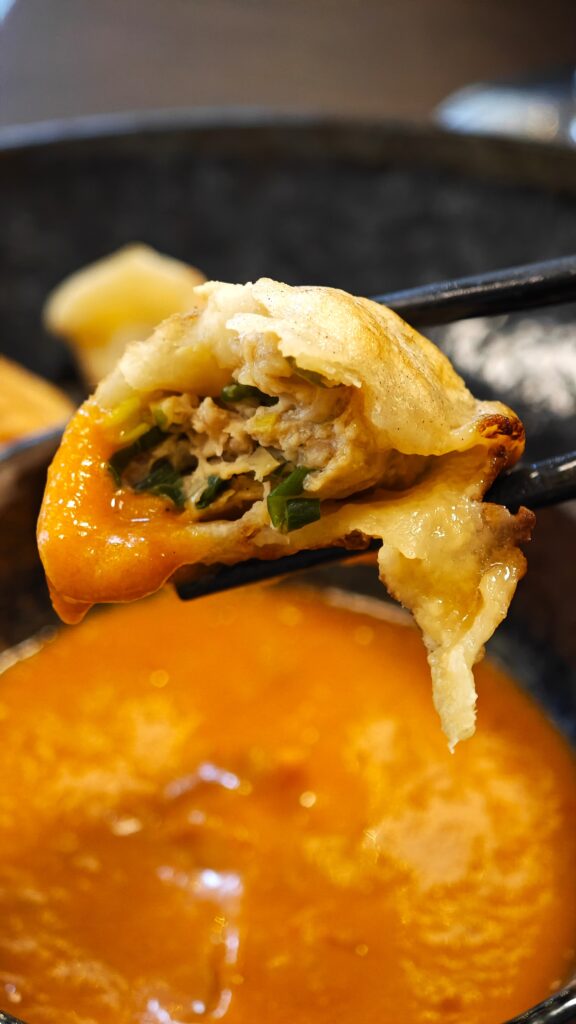
The momos are served with a mild, lightly sweet paprika sauce that enriches the flavors without overwhelming heat. If you enjoy a little extra kick, there’s also a homemade chili sauce available, which adds quite a punch.
If you’re in the mood for a lighter version of the classic momos, you can try the Homemade Steamed Momo. This dish consists of 10 perfectly steamed dumplings, with the same filling options as the pan-fried version, including vegetable, beef, chicken, potato, or a mixed plate that gives you a taste of everything.
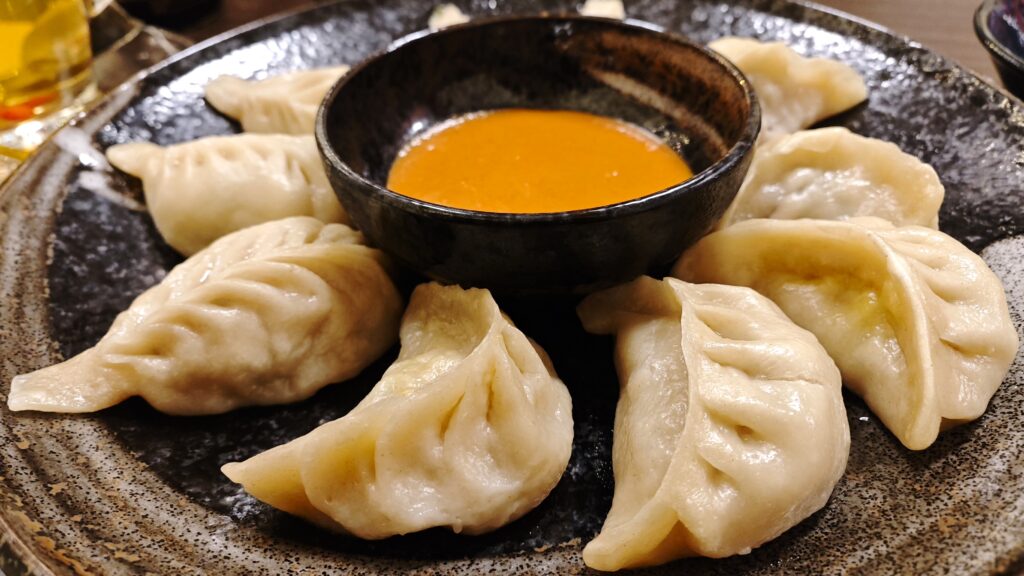
The skin of these steamed momo is super thin and soft, providing a delicate wrap that lets the natural flavors of the fillings shine through.
The vegetable momo, with a fresh filling of finely chopped cabbage, carrots, and green onions, taste crisp, clean and refreshing.
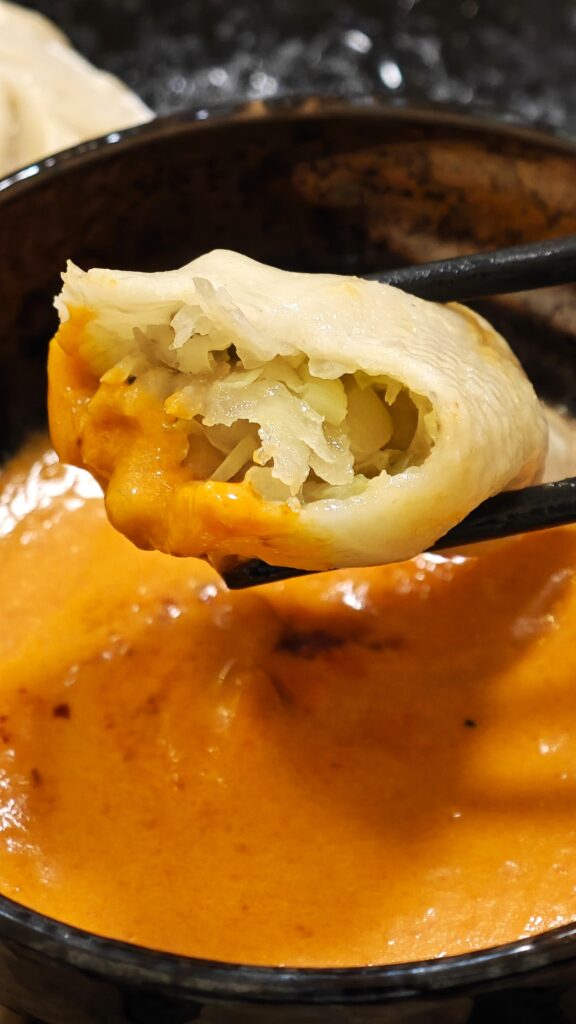
We’d recommend pairing the veggie momos with just the light paprika sauce—its mild, subtly tangy flavor complements the freshness of the filling perfectly.
The beef momo is wonderfully juicy, with the rich beef mixed with spring onions, creating an aromatic, savory mouthfeel. It’s tender and packed with flavor. The chicken momo has a slightly sweet, delicate flavor, with minced chicken meat, onion, and green onions coming together. It’s light and easy to chew, making it a great option for those who enjoy meat but prefer a subtler taste. The potato momo is soft and comforting, with a smooth, pillowy filling.
For an added kick, you can pair the momos with the spicy chili sauce. The chili sauce, when mixed with soy sauce, gives an umami, flavorful punch that works perfectly with the richness of the meat-filled momos.
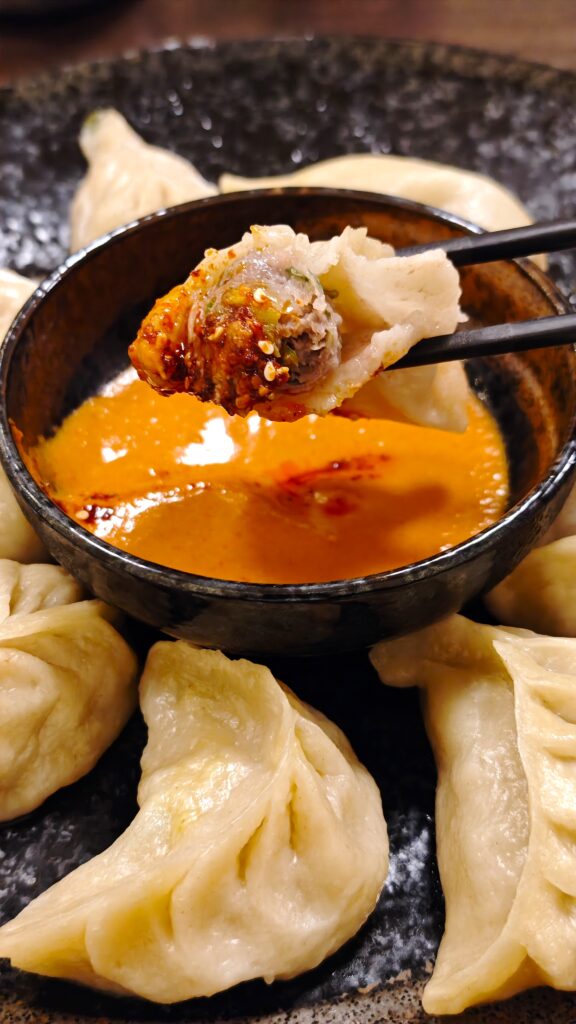
A side tip: Ask for an extra plate to mix the chili sauce on the side, so you can continue enjoying the light, mild paprika sauce separately while also satisfying your spice cravings.
Handcrafted noodles are a staple in Tibetan households, where they’re prepared with care and precision to achieve the perfect balance of elasticity and tenderness. At Tibet Dawa Momo, you can experience this labor of love firsthand.
The first noodle dish we’d like to recommend is Dawas Thukpa. This dish features homemade long noodles paired with eggplant, carrots, white garlic, and coriander. At Tibet Dawa Momo, you can choose between vegetarian, beef, lamb, or chicken options—we went for the beef, and it was a choice we’ll gladly make again.
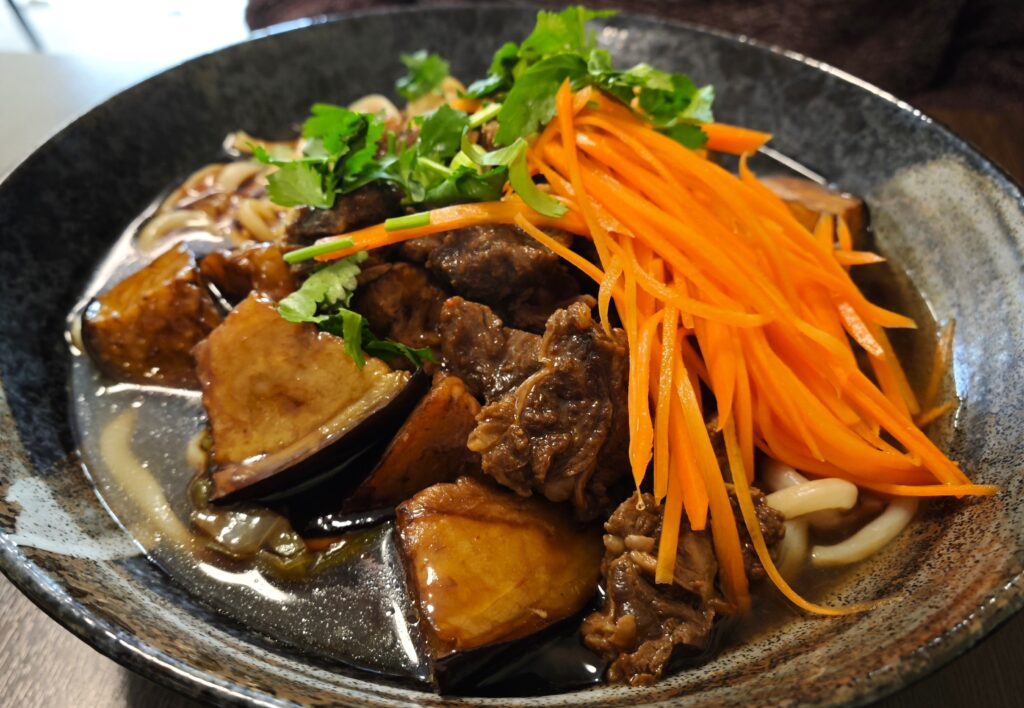
The noodles are thin, elastic, and perfectly textured. Their slenderness allows them to soak up the sauce fully, making each bite burst with flavor. The eggplant adds a subtle smoky depth, while the fresh coriander and white garlic add an aromatic freshness.
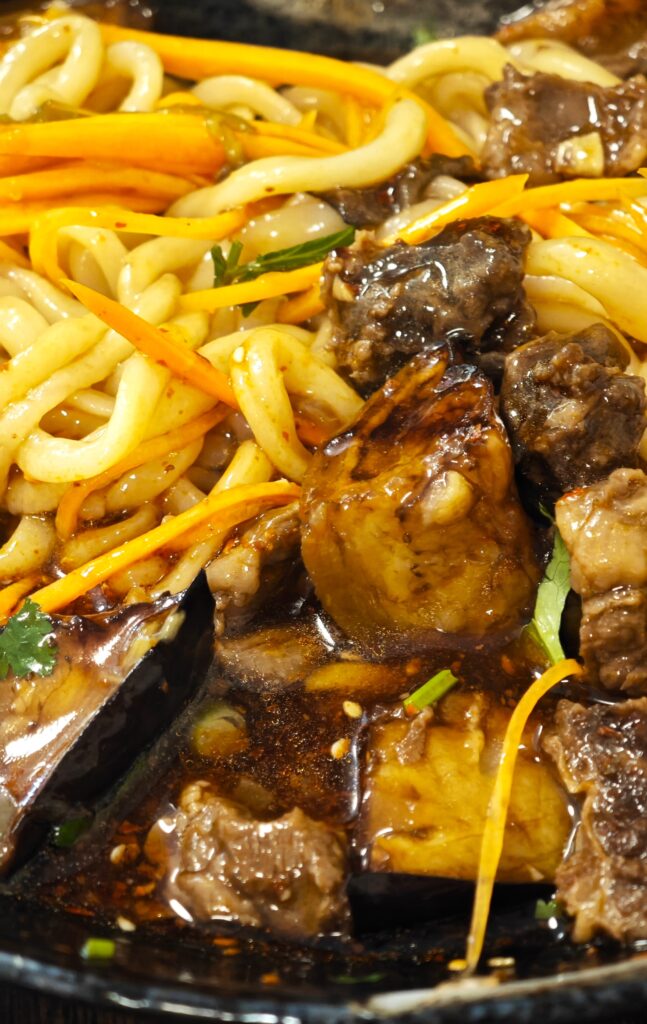
The braised beef is tender and easy to chew, with a slight sweetness similar to the rich hong shao (红烧) flavor – a mouthwatering blend of soy sauce, sugar, and spices that’s deeply savory, slightly caramelized.
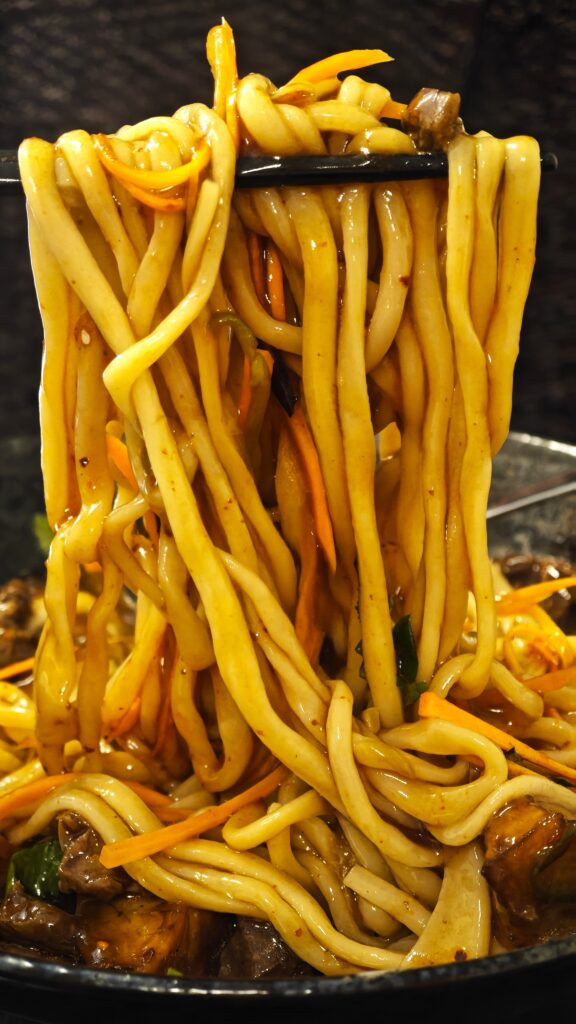
The mix of lean and fatty cuts makes the sauce irresistibly juicy, coating each noodle in a silky embrace.
Bhoethuk is a veggie-packed Tibetan noodle dish, featuring handmade noodles served with zucchini, mushrooms, tofu, carrots, and coriander. Like Dawas Thukpa, Bhoethuk offers the same topping options—vegetarian, beef, lamb, or chicken. This time, we tried with the lamb.
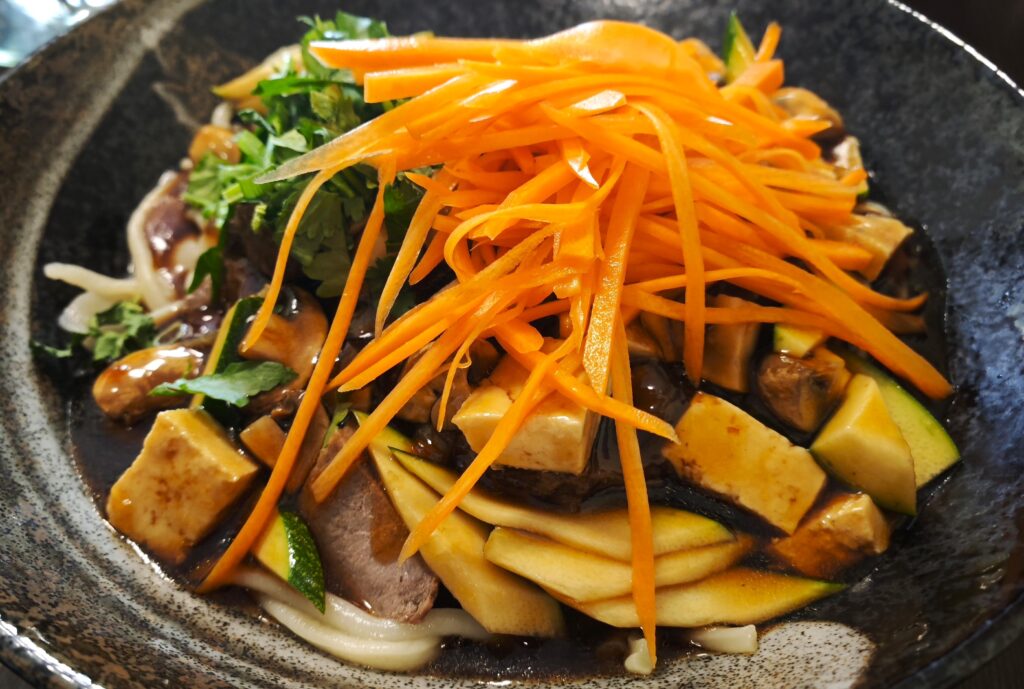
While sharing roots with Thukpa, Bhoethuk stands out with its extra helping of vegetables, which adds variety to the flavor and texture. Tender zucchini brings a mild sweetness that melds seamlessly into the savory broth, while mushrooms add an earthy note. Soft tofu provides a creamy richness, crunchy carrots lend a mild sweetness, and fresh coriander finishes with a bright, herbal note.
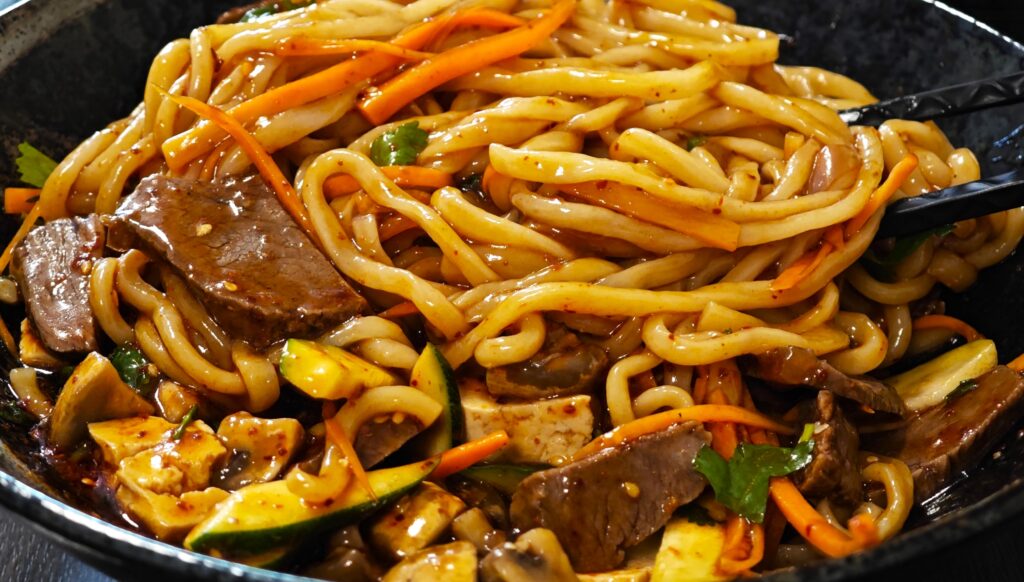
The generous portion of lean lamb boasts a robust, distinct flavor that pairs perfectly with the juicy, aromatic sauce. We love to eat it with a dollop of their homemade chili sauce. It brings an umami-rich depth and a fiery kick that complements the lamb’s richness and balances the mild sweetness of the sauce.
Lhasa Thukpa, a unique take on a Tibetan-style Bolognese, features homemade Tibetan noodles, ground beef, carrots, coriander, and cucumber.
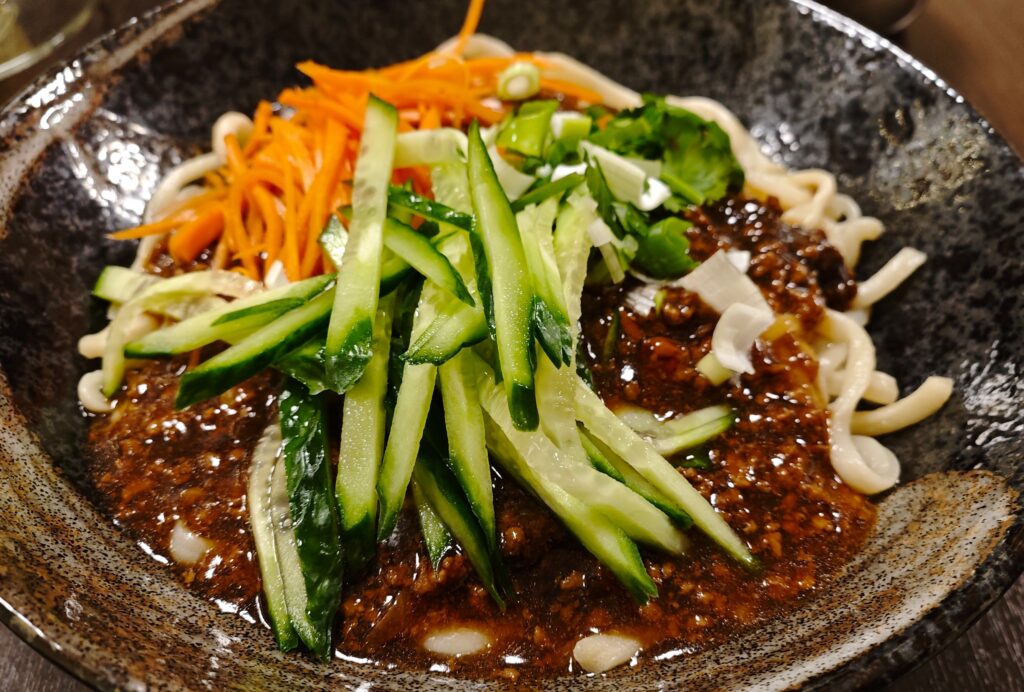
The beef is simmered in a sauce enriched with doubanjiang, a fermented bean paste known for its deep umami and earthy notes. The combination of the rich beef and the bold doubanjiang sauce is similar to 老北京炸酱面 (Beijing Zha Jiang Mian) – savory, slightly smoky, and deeply flavorful.
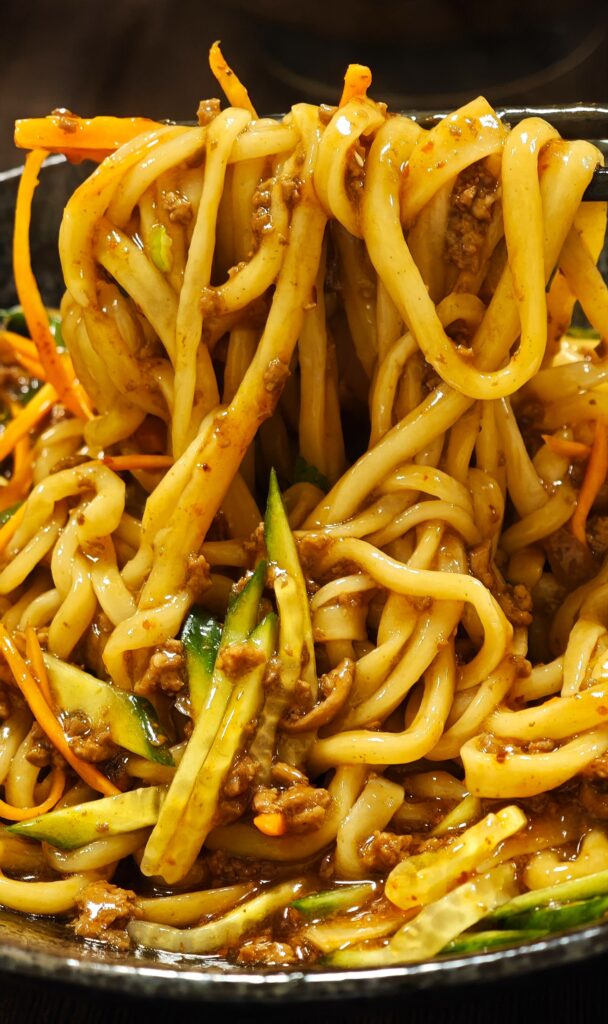
Unlike the veggie-laden Bhoethuk or Dawas Thukpa, Lhasa Thukpa leans more towards the hearty side. With the ground beef taking the center stage, the carrots, cucumber and coriander bring a burst of freshness that lightens the dish just enough.
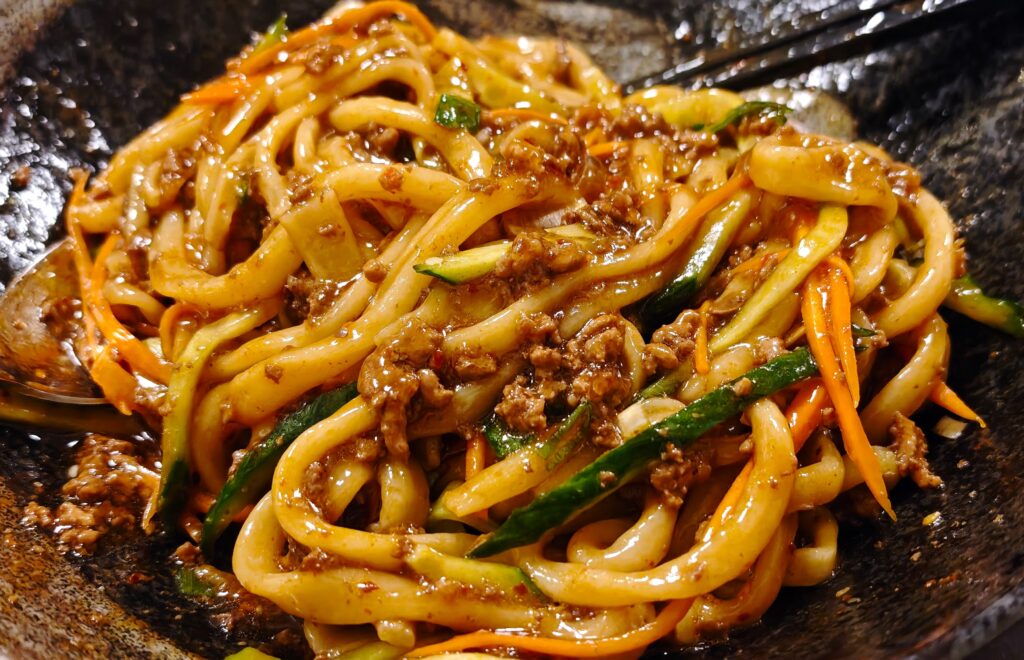
Tibet Dawa Momo also offers a good selection of noodle soups. Here, we’d like to highlight two.
First is Phing Thang, a light and refreshing noodle soup made with silky glass noodles, pak choi, tofu, and a variety of fresh vegetables. The broth is mild yet full of depth, with a subtle infusion of tomatoes that lend a touch of tanginess. The smooth, long glass noodles are easy to slurp up. They absorb the delicate, clear broth, making each spoonful soothing and flavorsome.
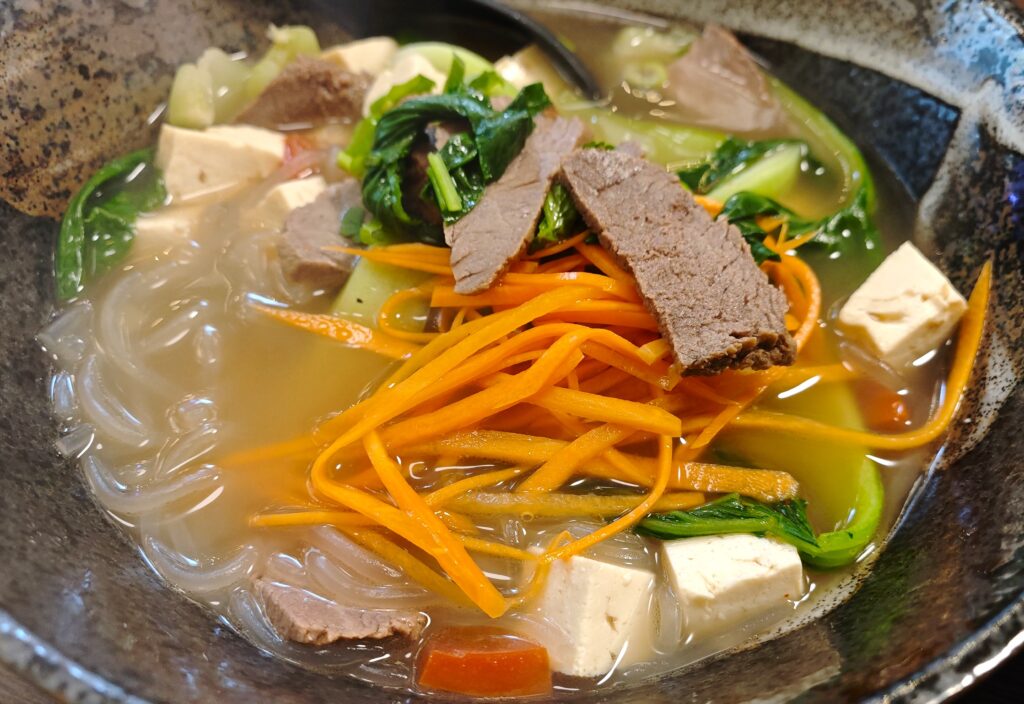
You can choose from vegetarian, beef, lamb, or chicken as toppings. In fact, this noodle soup tastes at its best with just the vegetables, and it’s perfect for those who prefer lighter flavors. But in winter, we tend to add lamb, which gives the soup a rich, robust meaty flavor that we often crave in colder months.
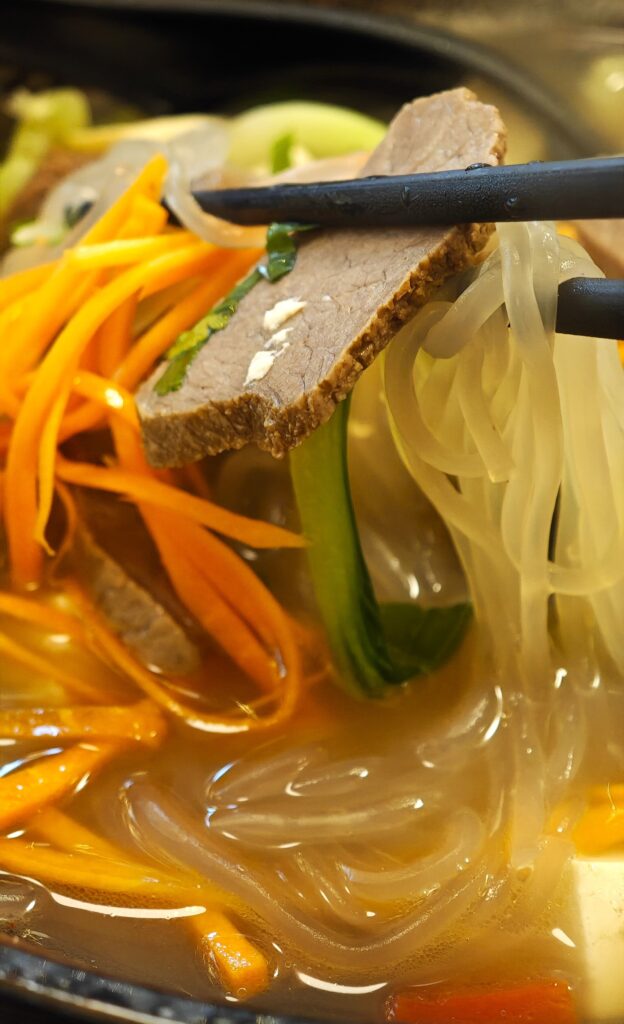
Thenthuk is our favorite noodle soup dish at Tibet Dawa Momo. It features homemade, square-shaped noodles that are both chewy and springy. The dough is expertly kneaded to ensure each piece is thin yet resilient, holding its shape even after soaking in the broth for a while. Cut into pieces, they’re easy to scoop with a spoon without splashing, which makes enjoying the soup more convenient.

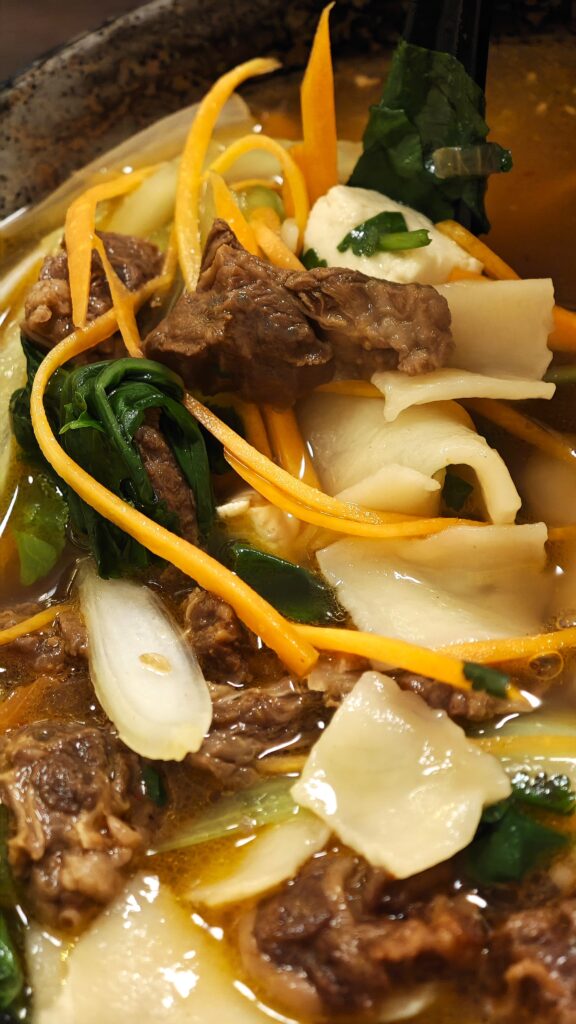
The dish also includes soft tofu, pak choi, carrots, fresh coriander and an extra beef topping. The veggie medley adds brightness and balance to the richness of the beef, which is tender and savory, with an added depth from the beef tendon.
While this version is meat-based, it still has a healthy portion of veggies, making for a well-rounded meal. The soup itself isn’t overly salty. With the square noodles, you can fully appreciate the soup; it’s so soothing for the stomach – perhaps it’s the light broth and the basic, nutritious, natural ingredients that make it so gentle and enjoyable.
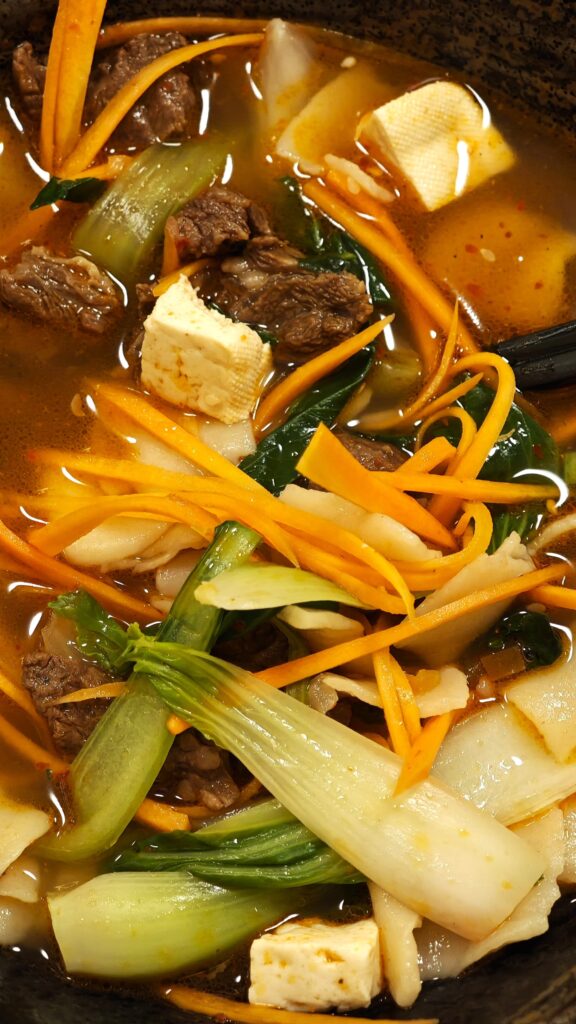
The Tibetan noodles are typically made from highland wheat grown in Tibet’s elevated regions, with the dough enriched by the use of natural alkaline water. This process gives the noodles their signature golden hue, soft texture, and slightly rustic, whole-grain flavor.
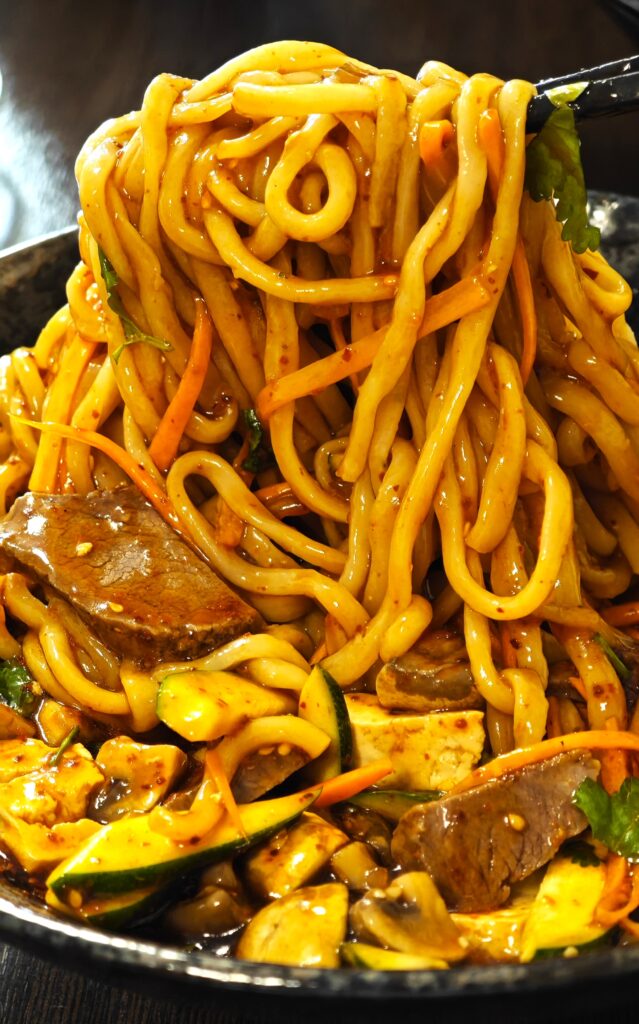
The added alkalinity not only enhances the taste of the noodles, but also stimulates intestinal peristalsis and helps neutralize excess stomach acid. That’s why the elders often say: Tibetan noodles, gentle and kind—soothing your stomach, peace of mind! (吃藏面,对胃好!)
The menu here centers around momos and noodle dishes—simple yet thoughtfully curated. In addition to what we’ve covered here, Tibet Dawa Momo also serves salads, small dumplings (Chu Mog) and Thukpa (long noodle soup). The noodle portions at Tibet Dawa Momo are generous and suitable for sharing. If you’re dining with someone, you can ask for the noodles to be served in two bowls—it’s a great way to split! This way, you can savor a bowl of noodles and perhaps pair it with a plate of momos for a more diverse meal.
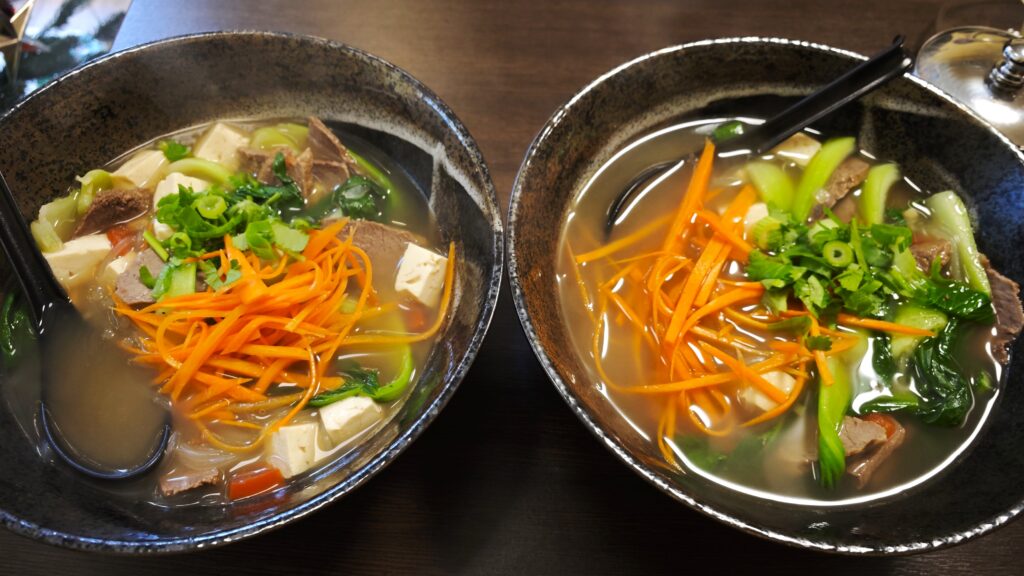
Since Tibet Dawa Momo is still relatively new and under the radar, it’s usually easy to find a table—but with food this delicious, it won’t be long before it becomes as bustling as the other popular Tibetan spot nearby.
